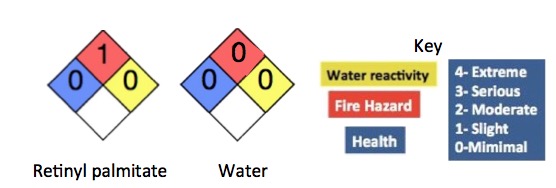
With summer right around the corner, it is time to dig out the bathing suits and flip flops. More importantly, it is time to buy new sunscreen and start using it - daily. Sun exposure is a major contributor to the number of cases of skin cancer - the most common cancer in the United States.
If you had any hesitation about using sunscreen, the American Academy of Dermatology (AAD) released a statement last month, just to make sure that the message was clear. They state,
“The American Academy of Dermatology wants to emphasize that sunscreen remains a safe, effective form of sun protection. As one component of a daily sun-protection strategy, sunscreen is an important tool in the fight against skin cancer, including melanoma, the deadliest form of skin cancer."
But, the water is muddied around the topic of sunscreen and the issue has become confusing - something that will certainly cost lives. The confusion originates from groups such as the Environmental Working Group (EWG) who promote the idea that the chemicals in sunscreens (the ones that help protect you from the sun) will cause cancer or are otherwise toxic for you and your children.
To help clarify the confusion - that they themselves started - EWG made a list (as they do) of EWG's 2017 Guide To Sunscreens to provide "Sunscreen Safety ratings that help you make the right purchase."
Their rating system, called 'Skin Deep', provides a hazard rating (shown as low, moderate, or high concern) in combination with the amount of data available to make that rating (none, limited, fair, good or robust.) Although there is a very long description on their website, the process falls short.
For example, the sunscreen ingredient named retinyl palmitate is, basically, vitamin A and can be purchased at Whole Foods as a supplement. However, EWG ranks it as a 9, or highly toxic.
But, if you look at the chemical safety rating:

The National Fire Prevention Agency (NFPA) safety diamonds for retinyl palmitate (left) and water (right). It is about as toxic as water.
Another flaw in EWGs system, as has been pointed out elsewhere, is that several of the products have a rating of 'no data', but, they fall under different hazard categories - PEG-150 Distearate (Hazard 3), Tea Cocoyl Hydrolyzed Collagen (Hazard 4), PEG-2 Soyamine (Hazard 5) Sodium Octoxynol-2 Ethane Sulfonate (Hazard 6). If there are no data available, how are they coming up with these ratings?
In another case of confusing ranking, The Honest Company's notoriously ineffective sunscreen, which many people used only to find themselves nursing sunburns afterward, receives the best 'Skin Deep' score - a "1". But, if it doesn't prevent sunburns, then how safe is it?
The EWG is creating a problem where there isn't one.
The statement made by the American Academy of Dermatology (AAD) last month states,
“Current scientific data does not support claims that sunscreen ingredients are toxic or a hazard to human health. Rather, evidence supports the benefits of applying sunscreen to minimize short- and long-term damage to the skin from the sun’s harmful ultraviolet rays.
“Sunscreen products contain one or more active drug ingredients —compounds that absorb, scatter or reflect UV light — and are regulated as over-the-counter drugs by the U.S. Food and Drug Administration (FDA). The FDA has several safety and effectiveness regulations in place that govern the manufacture and marketing of all sunscreen products, including safety data on its ingredients.
There are so few measures that we have in our arsenal to try to prevent cancer. Why not listen to the medical experts instead of the environmental groups on this one and you use sunscreen that works?
EWG states, on their website, that "Sunscreen Should Be Your Last Resort." No, EWG, melanoma should be your last resort.
NOTES:
The American Academy of Dermatology (AAD) and the Skin Cancer Foundation both recommend
- Generously applying a water-resistant, broad-spectrum sunscreen – that protects against both types of ultraviolet radiation (UVA and UVB)
- Use SPF 30
- Cover all exposed skin
- Apply 15 minutes before sun exposure and reapply every two hours when outdoors, when swimming or sweating
- Also practice other sun-safe practices such as limiting sun exposure (especially between 10-2), seeking shade, and wearing sun-protective clothing, hats and sunglasses.
- Choose the sunscreen that you are most likely to use.



